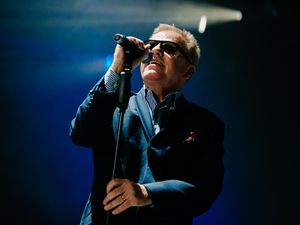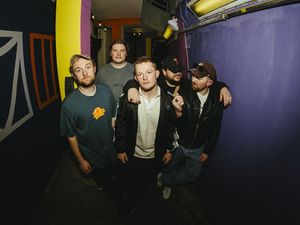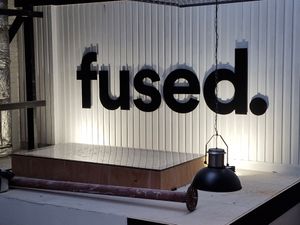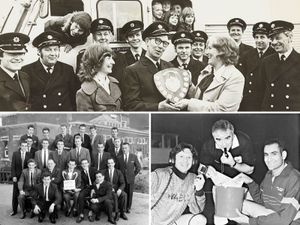How you can still raise a glass in Dry January with an alcohol-free beer
We've all been there.
A New Year's Eve to remember, an night of bonhomie and celebration, the champagne corks still popping as the small hours of the morning start go get bigger.
And then the next day the lethargy, the headache, the nausea – and the resolution you rather foolishly made to lay off the booze in the new year.
Dry January has become a growing trend over the past few years.
Good for the health of the nation, less good for the pub trade, and extremely miserable for people when it dawns on them that they have committed to 31 days of drinking nothing more interesting than lemonade or Britvic orange.
But it seems the times are changing. As more people take the pledge, it seems the brewing trade has spotted a gap in the market, with a burgeoning industry of low-alcohol beers.
While 10 years ago this would have meant a choice from a handful of brand synthetic lagers, the industry seems to at last be catching up and has come up with a range of different beers emulating everything from milk-stout to American-style pale ale.
Vote in our poll:
In 2018 the Campaign for Real Ale allowed a low-alcohol brew to take part in its Great British Beer Festival for the first time.
Top West Midland beer sommelier Mat Hocking, who keeps beers at Chez Sophie in Shrewsbury, is taking part in dry January this year, and when he holds his monthly tasting session with friends this month, he will sampling 32 different low-alcohol or alcohol-free beers.
He says the quality of these beers has come on in leaps and bounds over the past few years, with many of the low-alcohol drinks just as good as the full-strength alternatives.
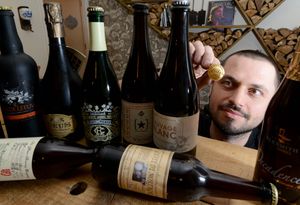
"The technology has moved forward at incredible pace, there's so much flavour out there now," he said.
Mat singles out Montgomery-based Monty's brewery, which produces an excellent cask ale just 2.9 per cent in strength, although strictly speaking the term 'low alcohol' usually refers to beers up to 0.5 per cent in strength – roughly comparable to eating a banana.
"Some of the breweries, such as Big Drop, now specialise entirely in producing low-alcohol beers," Mat adds.
"Some have spent a long time trying to perfect their low-alcohol beers, trying to get the flavours right for people who can't drink, or who are the designated drivers.
"A few years ago, a low-alcohol beer in the supermarket meant just a light lager, but now there's a lot more options out there."
Consumer data organisation Neilsen reported a 24 per cent increase in the sales of low- or non-alcoholic beers in the four weeks up until Christmas, and while the market is still small beer in terms of total beer sales, it is only set to grow in one direction.
Here the Star looks at some of the popular beers available in the shops now:
Brewdog Nanny State (0.5pc):
A strong citrus aroma and flavour, but a little on the sharp side while somehow seeming a little watery. Dry-hopped with five different varieties, this golden ale is just a bit overpowering. Subtle in ain't.
(6/10)
Big Drop Pale Ale (0.5pc):
The pick of the light beers, this dry-hopped pale ale is very aromatic. Good solid body, and strong citrus flavour with a little sweet malt and honey. Not quite the real thing, but a pretty good effort, and the pick of the light beers. Relatively expensive at £1.30 for a 330ml bottle, but worth it.
(8/10)

Big Drop Stout (0.5pc):
Rich, chocalatey and creamy, this is by a long way the pick of the bunch, pretty much indistinguishable from a 'proper' beer. Pours with a good head, this looks, smells and tastes like a real ale.
(9.5/10)
Budweiser Prohibition (0pc):
Packed with additives such as 'hop extract' and 'malt extract', this is not exactly what you would call a natural product. Inoffensive, in the sense it doesn't actually taste of much at all, it is a bit like drinking a watered-down pint of normal lager. Perfect for the drinker who doesn't actually like beer, and on the plus side, it is cheap at £2.50 for four, with some retailers offering further discounts.
(5/10)
Bavaria 0.0 per cent:
Like its full-strength cousin, this Dutch beer is rather misleadingly named. With a slightly sweet, malty flavour, it is a reasonably pleasant if forgettable drink. Quite drinkable, and very cheap (£1.79 for four at some retailers), but doesn't really taste like beer. The pick of the mass-produced budget brands.
(6/10)
Adnam's Ghost Ship Alcohol Free (0.5pc):
Essentially the popular 4.5 per cent amber ale with the alcohol filtered out, it tastes pretty similar to the real thing. Fruity with a hint of caramel, there is a slightly overpowering bitterness, but pretty authentic all the same.
(8/10)
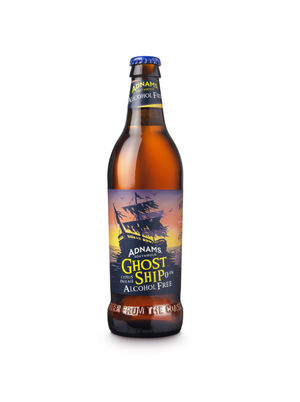
San Miguel 0,0 (0 pc):
Similar to Bavaria, but slightly more expensive at £3.49 for four, and slightly less sweet. Quite palatable, quite forgettable.
(5.5/10)
St Peter's Without (0.05pc):
Some people seem to love this, but I'm not one of them. Full-bodied, it looks and tastes like cold gravy, or maybe the contents of a home-brewing kit before the water has been added. At £1.30 a bottle, it's not especially cheap, either.
(3/10)
Heineken 0.0 (0.05pc):
Bland and fizzy, with a slightly sharp taste, if you are a fan of mass-produced lager you will probably be quite happy with this, but if you want to actually enjoy a bit of flavour, you will be disappointed.
(5.5/10)
Old Speckled Hen (0.5pc):
A not altogether successful attempt to replicate the popular full-strength beer of the same name. The ingredients list shows the use of artificial flavourings, which is reflected in the slightly synthetic taste. A change from the bland lagers, but will not satisfy real ale buffs. Overpriced at £1.30 a bottle.
(6/10)
Warsteiner Fresh (0.0pc):
This award-winning pilsner from the venerable German brewer uses the same ingredients and brewing method as the full-strength Wartsteiner Premium, with the alcohol removed at the end of the process. Amber coloured, a thick white head appears on pouring, which disappears quite quickly. Like Bavaria, it has a sweet, slightly syrupy flavour, which is reasonably pleasant if unexciting. Care needs to be taken while pouring, to avoid the yeast sediment turning the beer cloudy. Reasonable value at £1.99 for four.
(6/10)
Becks Blue (0.05pc):
Britain's biggest selling alcohol-free beer, Becks is made purely from natural ingredients, although you wouldn't think so to look at it – the bright, golden colour and frothy white foam looks more like the sort of thing that might have been created from a chemistry set. Very bitter and fizzy in flavour, it is perhaps preferable to cola, but there are so many better low-alcohol beers about these days.
(4/10)

